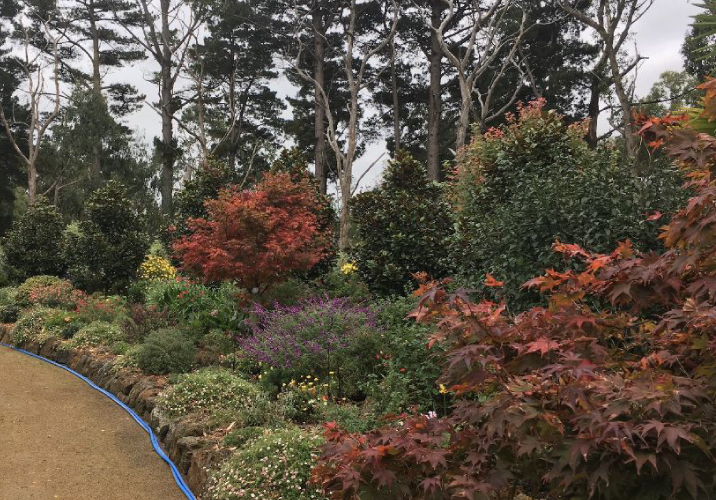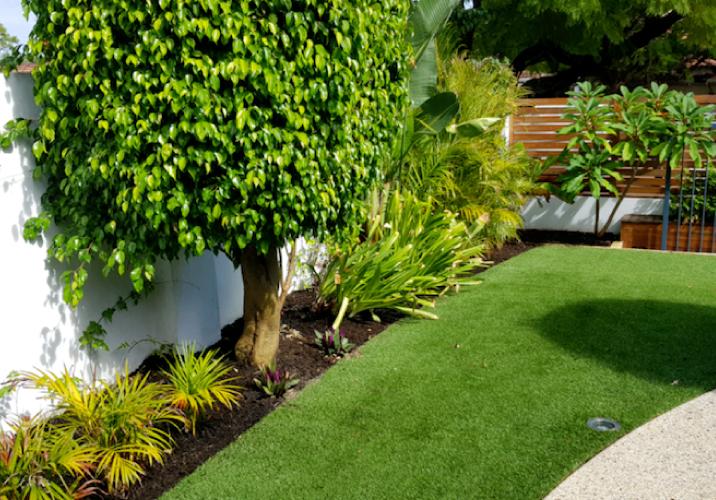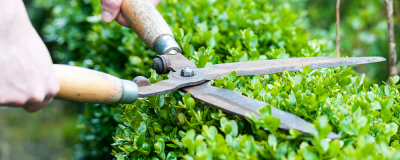
Find a local gardener
- Inspiration /
- Outdoor projects /
- Gardening & landscaping /
- How to prepare your...
How to prepare your garden for winter
Getting your yard through the frost
With the drop in temperature and the sun setting earlier, the thought of spending extended time in the garden seems less appealing, not to mention not all plants survive the frost. There are plenty of things you should to make sure your garden is protected through the cold and will bloom again brighter and more beautiful in the spring. Here’s our guide to keeping your garden strong through the winter months.
Preparing your garden for winter
Take a moment to sit back and look at the layout and design of your garden. Winter is the ideal opportunity to consider what seeds you’d like to plant or how you want to landscape your outdoors.
Place your plants in areas where they can take full advantage of whatever sunlight is available. Winter plants need plenty of room for optimum air circulation, so they need to be placed further apart from each other. This also prevents fungus and diseases from developing.

Mulch & weed
The first thing you need to do is lay down some mulch you can think of mulch as a blanketing insulator for your garden. It will protect your plants from the cold and frost, and when the mulch decomposes, it will add all of its rich nutrients right back into the ground. They’ll make your plants that much stronger when they start to grow back.
Next, it’s time to weed. That’s right, get down and dirty in there before the weather gets cold. Yank out every weed that you see, or just treat the area with plenty of weed-killing products. This is a necessity. It reduces the risk of unwanted seeds and spores spreading through the garden, which could take root and disrupt the lives of all of those plants you worked so hard to grow. You want those plants to bloom in the spring – not some undesirable weeds.
Compose some compost
Begin a new compost heap in the time leading up to the winter months. Throw in all of the organic stuff that your house produces – grass clippings, leaves, plant shavings, household scraps. Over the cold winter months, all of this material will break down, and when spring breaks, you’ll have a heaping pile of compost that will sustain plenty of plant life in the garden!
Keeping up the garden
The time leading up to winter is also the perfect time to do some maintenance tasks – remove old plants and chop off dead and dying leaves or branches. Don’t prune plants (that just encourages growth), unless they’re perennials – those will just grow back stronger. This time is also the time to start rearranging plants and thinking about your garden layout for next year. You can also start to plant bulbs and bare-rooted shrubs, and it’s also the right time to divide up perennial plants.

Oh, and one last, very important point – be sure to store your gardening tools for the winter. Clean them thoroughly, oil the blades, and put them away in a secure location. You don’t want the elements dulling the stuff you’re going to need.
Plants that thrive in winter
Some plants can grow considerably well in the winter so don’t shy away from planting flowers, vegetables, or plants that thrive in the colder months. If you’re interested in keeping blooms and buds around you all year round, here are some tips for planning a lovely winter garden.
Go Native
When planning a winter garden, the best place to start is by looking for native plants that are indigenous to your area. In Australia the majority of native plants start flowering in autumn and continue until early spring. These native flowers help to provide nourishing proteins and carbohydrates to the birds during the winter months.
Here are a few colourful plants you should consider for your winter garden:
- Grevilleas: These popular plants come in a wide range of gorgeous colours and continue to flower throughout the winter season. You can choose groundcover varieties in addition to different sizes of shrubs and trees.
- Correas: With more than 30 different varieties of correas, youll be able to choose from colours such as vermillion, green, bright red and pink.
- Hakeas and banksias: These have gorgeous, show-stopping flowers that produce a heavenly scent.
Winter Soil
For native plants, it’s important to enrich the soil with compost and mulch as well as to aerate it regularly so that the soil will stay loose. If you have clay soil, youll want to loosen it first and then add gypsum, which will help break the clay down to make it more manageable. Fertilisers are also good for native plants, but make sure that they’re low in phosphorous. You can fertilise once or twice every year; the optimum times are early spring, late summer, early autumn and late winter.
Effective Foliage Plants
Because so many plants lie dormant during the winter months, consider adding some colour to your garden by using foliage plants. These come in solid or variegated shades and can bring touches of red, purple, grey, yellow and black to an otherwise monochromatic winter garden. For added drama, chose plants that have a variety of textures and shapes. Spiky-leafed plants, for example, look striking when placed next to plants with broad, curving leaves.
Here are some other flowers that can grow well in the winter:
- Mahonia
- Kniphofia or ‘Winter Cheer’’
- Camellias
- Pansies
- Calendula
- Stock and nemesia
For a garden that blooms all year round, consider also planting some winter veggies
- Cabbage
- Radishes
- Peas
- Coriander
- Broccoli
- Brussel Sprouts
- Cauliflower
Preparing your lawn for winter
Just because winter is coming does not mean you will lose all the work you put into your lawn over the summer. Preparing your lawn for winter is your best insurance for having it come back next spring, as lush and green as ever.

- Weed Control: These prolific species are one of your biggest challenges because they are such hardy, stubborn bunches. The fix? Do thorough weeding during early winter and these weed-fests won’t stand a chance in the new season.
- Breathable Soil: Ever notice how rock-hard your lawn becomes over the summer? This natural tendency discourages lawn growth and encourages weed growth. Over the summer, buy a lawn aerator from a garden supply store. Aerators will oxygenate the soil and balance water flow when the rainy season comes.
- Fertilisers and Soil Conditioners: Ideally, your soil should have a pH balance ranging from 5.5 to 7.5 – you can check this with a test kit or by taking a sample to a local nursery or agricultural office. Fertilisers are like antioxidants for plants. They spur healthy growth at fundamental stages during winter, spring and summer. Choose a liquid fertiliser, such as Nitrosol or Seasol to use on the lawn. Alternatively, you can add slow release lawn food or a complete lawn food. Consult an expert in your town to test the pH level and to recommend the best products for optimal results.
- Fill Dirt Patches: A good time for seeding dirt/dry patches is late fall, or you can try transplanting from an overgrowth area of your lawn to fill these patches in.
- Regular Winter Maintenance: Even when your lawn is near or in hibernation, you should perform regular maintenance. Pick up debris and keep your lawn clear of leaves. Your lawn needs light to nourish it, even in the cold months. A buildup of debris could result in dead spots come spring. Also pull any weeds that pop up to prevent them from spreading. If you have pets, give your lawn a light watering once a week to dilute the urine. This will also help prevent dead spots.
Related posts
How much will your job cost?
The Oneflare Cost Guide Centre is your one-stop shop to help you set your budget; from smaller tasks to larger projects.



